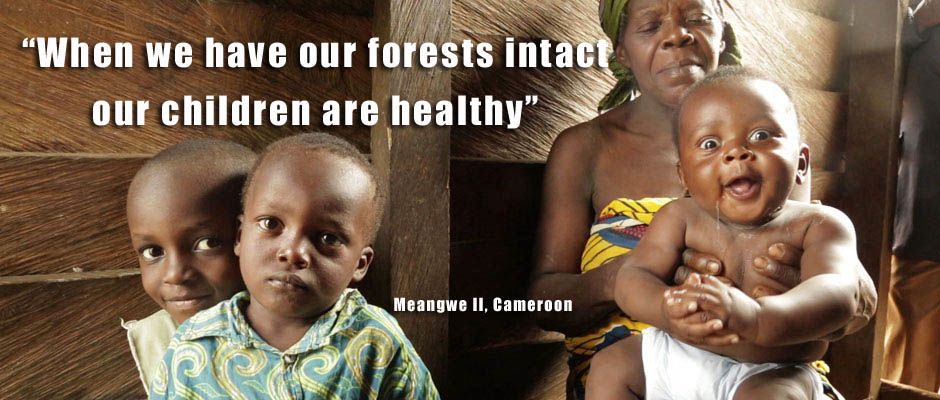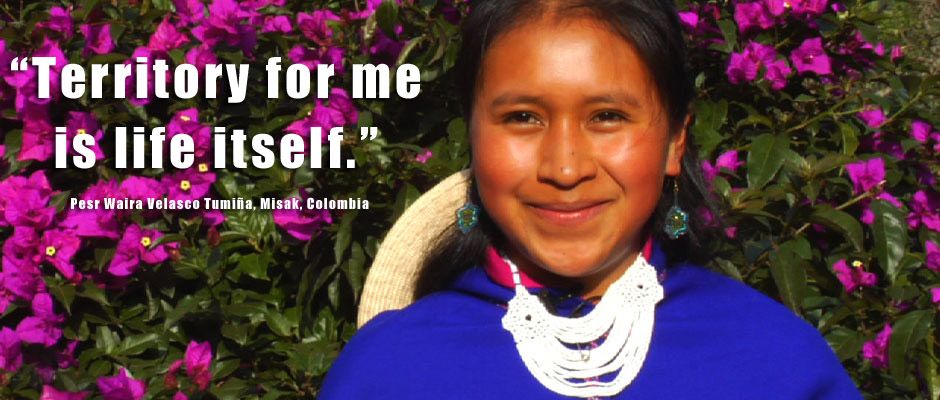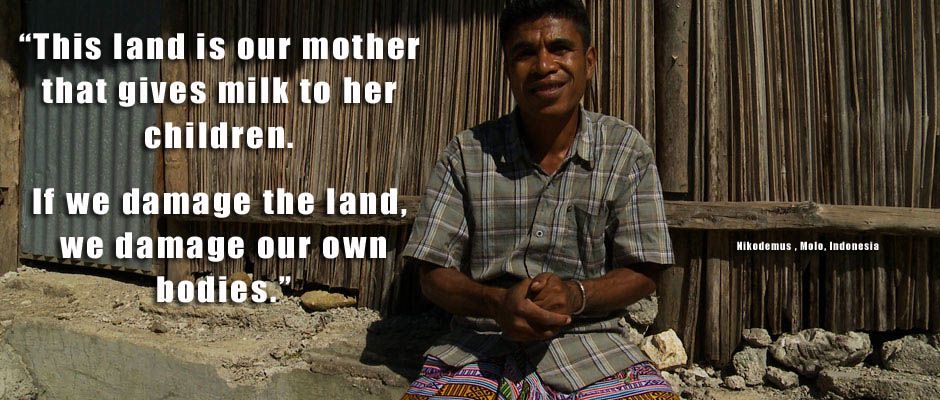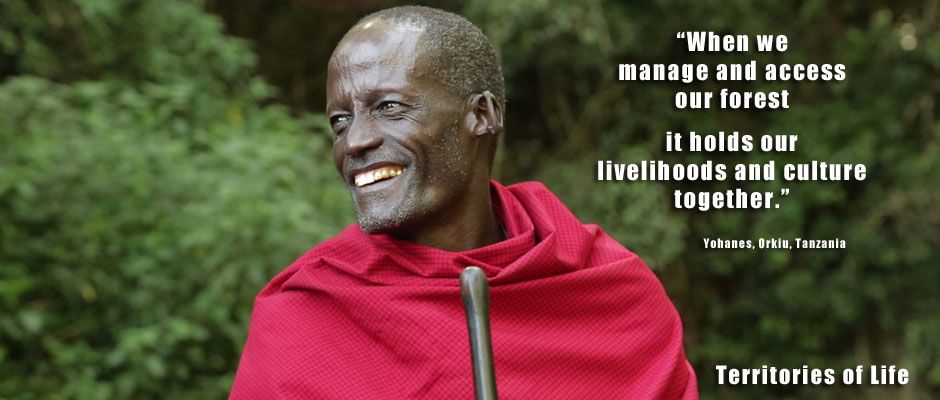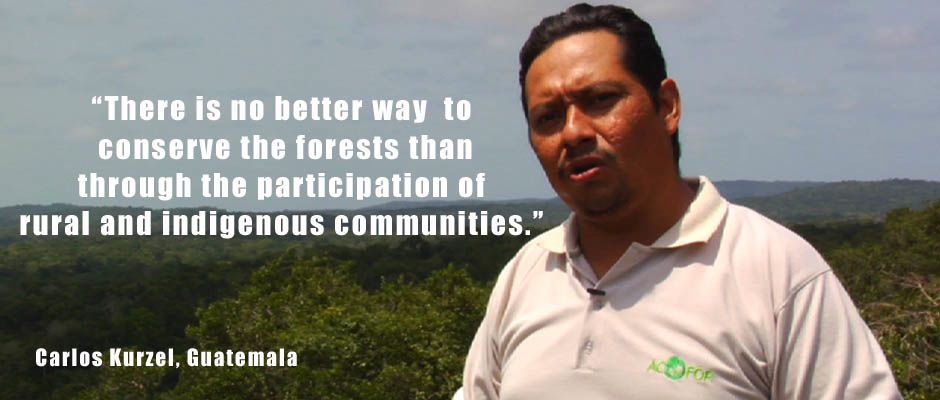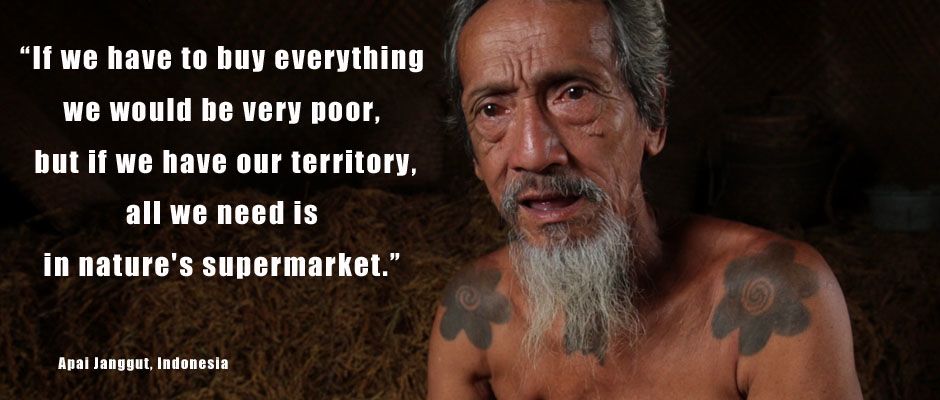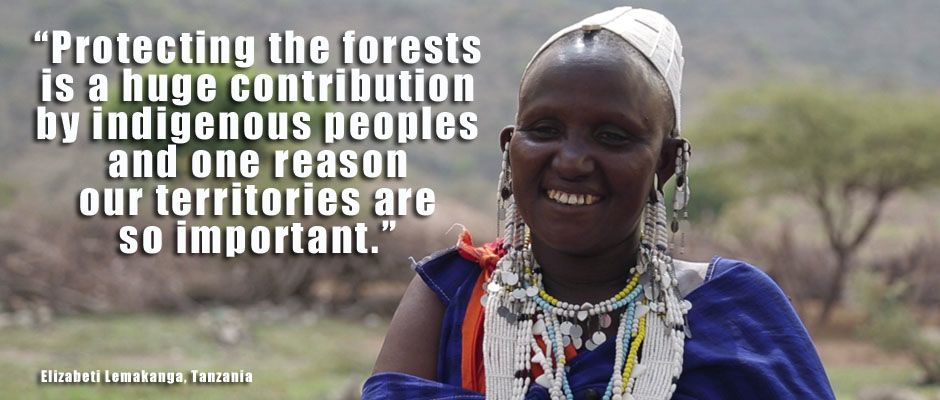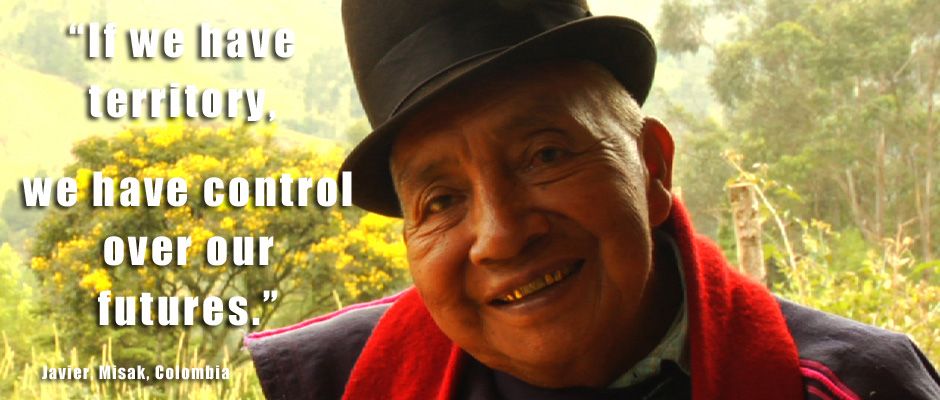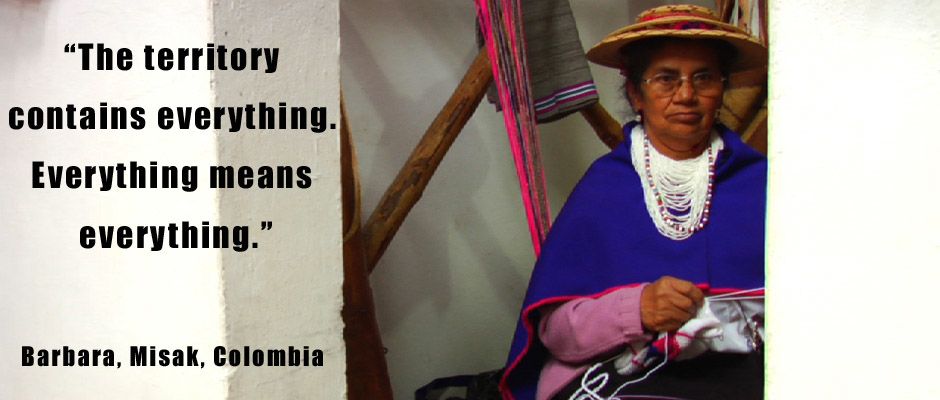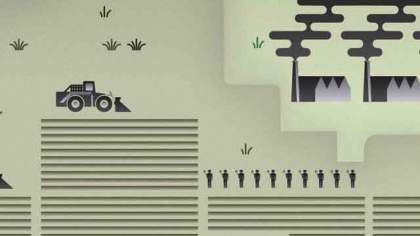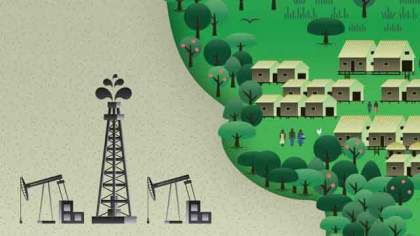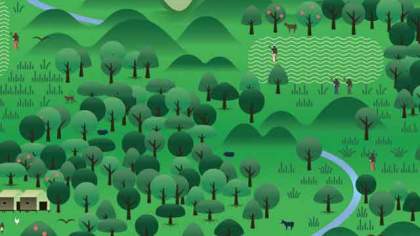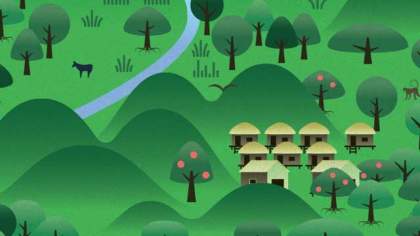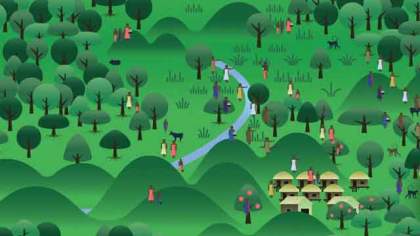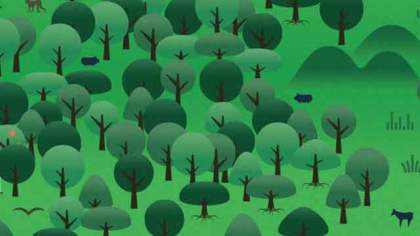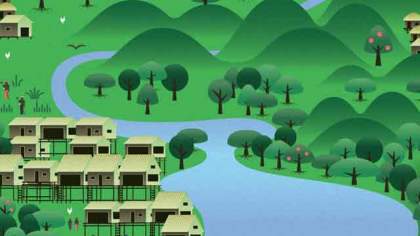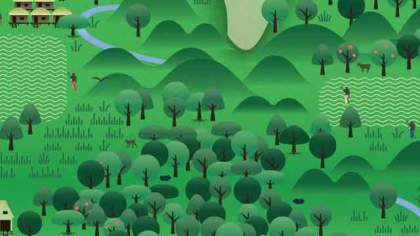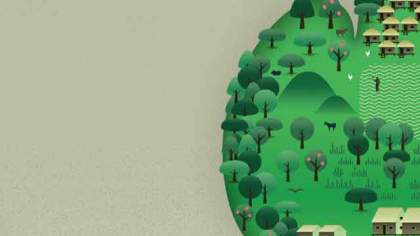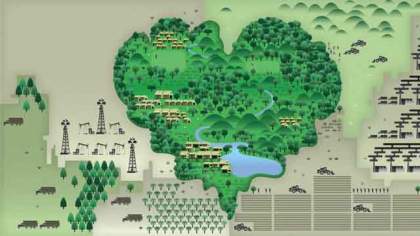-
What is 'Benefits of Territory' about?
What are the benefits of secure tenure for indigenous peoples, for the environment and for wider society?
Length of Video
9 minutes.
Why Screen 'Benefits of Territory'?
This video can be screened to communities as well as government officials and the general public to raise awareness of the importance of secure land tenure for indigenous peoples, the environment and wider society.
Download 'Benefits of Territory' here.
Watch in French, Spanish, Indonesian and Swahili
Suggestions for Discussion Questions after community screenings
- What does territory mean to you and your community?
- What benefits does your community gain from your territory in terms of culture, economic benefits, livelihoods, water resources etc.?
- How does or how would secure land tenure for your community benefit the environment and wider society?
- How do you manage your territory?
- How do you protect your territory?
- How can the knowledge that secure rights deliver benefits for communities, the environment and wider society help your struggle for the recognition of your rights, including your rights to your territory?
Suggestions for Follow-up Activities after community screenings
- In small groups, list all the resources that your territory provides for free that would otherwise have to be paid for (for example, food, medicines, building materials, cultural materials etc.).
- Discuss or show on a map the wider area that benefits from your territory, such as the waters that are protected by watersheds on your territory.
-
Documents and Downloads
Indigenous peoples’ rights to lands, territories, and resources
The new study by ILC confirms what we knew: indigenous peoples entertain special relationships with their lands, territories and resources, as these are central to their world view, their cultures, livelihoods, spirituality, identity, and their continued existence as distinct peoples. The author of the present study, Birgitte Feiring, is a renowned anthropologist who has worked on indigenous peoples’ rights and development for more than 25 years in several agencies worldwide, including as the ILO Chief Technical Adviser on Convention No. 169 and as an adviser to bilateral and multilateral agencies and to indigenous peoples themselves. (International Land Coalition, 2013)
Securing Rights, Combating Climate Change
Securing Rights, Combating Climate Change analyzes the growing body of evidence linking community forest rights with healthier forests and lower carbon dioxide (CO2) emissions from deforestation and forest degradation. This report makes a strong case for strengthening the rights of indigenous and local communities over their forests as a policy tool for mitigating climate change. (Rights and Resources Initiative, 2014)
- Securing Rights, Combating Climate Change - Executive Summary (pdf - 2 MB)
- Securing Rights, Combating Climate Change - Report (pdf - 9 MB)
Large-Scale Land Acquisitions and Food Security
Rerpot by DFID looking into the questions of the impacts of large-scale land acquisitions (LSA) on local food insecurity and malnutrition levels; and differences in impacts between the international and local investments (Tanner / DFIF and CEIL PEAKS, 2013)
Other videos
A Forest for Life. Forest management in Emberá Wounaan
A Forest for Life. Forest Management in the Embera Wounan Territory presents the achievements of this territory in the Panamanian Darien in the sustainable management of its natural resources. The video illustrates the progress and achievements of indigenous forest management through interviews with community leaders. Despite this progress, however, these Indigenous Peoples face a series of challenges in consolidating the sustainable management of their resources, including external pressures that threaten their territories, as well as regulatory and logistical obstacles. The experience demonstrates the capacity and potential for Indigenous Peoples as central actors in sustainable forest management and development based on their own cosmovision. (Alba Sud, 2013)
Indigenous Peoples: The Guardian of Indonesian Forest
From Papua to Sumatra, representatives of indigenous peoples agree on the importance of forests. They have proven themselves to be the faithful guardians of Indonesian forests. From Papua to Sumatra, communities are facing similar troubles in the destruction of their forests: large-scale oil palm, plantation forest, and mining concessions. Can Indonesia’s indigenous communities protect more than 15 million hectares of currently pristine customary forests? To save lives, biodiversity, and global climate. This film urges everyone to think clearly, especially to the Indonesian government to place their complete trust in these communities to sustainably manage forests. (Telapak / Gekko Studio, 2011)
CBFM Local Solution to Global Challenges
The video “Community Based Forest Management: Local Solutions to Global Challenges”expounds on the important role of community based forest management in indigenous peoples’ livelihood and food security; spiritual and cultural values; and climate change mitigation. The video focuses on the land use system of Lua (La-weu) indigenous peoples including sustainable practice of shifting cultivation in northern Thailand; and the challenges faced by the Bhagpani and Sitalupakha Women’s Community Forestry User Groups on forest management in Nepal. (The Asia Indigenous Peoples Pact / International Work Group for Indigenous Affairs / Indigenous Peoples’ Foundation for Education and Environment, 2014)
Sukutan Spring
The Sukutan community, Laikipia, Kenya, survives because of the spring they live next to. They use it for their livestock and share it with other communities, as well as with the abundant wildlife in the area. With rising climate change impacts they have witnessed an increase in inter-tribal conflict but lessons can be learnt from living together. (ResourceAfrica UK, 2012)
Land has Breath: rediscovering Altai’s human-nature relationships
Land has breath, an umbilical cord, nose, mouth eyes and ears... everything that exists on earth is alive. Altai is a harmonious co-existence of humanity and nature. This is traditional wisdom of the people of Russia's Altai Republic, located at the crossroads of China, Kazakhstan and Mongolia. The mountains here host rich indigenous culture that has protected the natural environment for countless generations. (UNU-IAS, 2010)
Lessons Learned from Jambi: People, Forest, and Recognition
In Jambi, Sumatra, the Bathin IX and Rimba Peoples have faces incredible pressures due to the loss of forest and land they call home. Oil palm and plantation forest expansions threaten the existence of these two groups. The people of Lubuk Beringin are aware of the importance of forest and the impacts of its degradation are often seen in Jambi. The people are protecting their forest and obtained the recognition with the Village Forest scheme. This movie shows two communities who lost their forests and another community with an intact forest. (Telapak / Gekko Studio, 2011)
Conversations with the Earth: Indigenous Voices on Climate Change
Photo essays and video projects from indigenous communities facing ecosystem disruption make up the collaborative project Conversations with the Earth. (Conversations with the Earth, 2011)
Fever: Resilience (English)
Resilience is the ability to cope and recover from abrupt change. Indigenous peoples who are organised, confident to adjust their systems to changing circumstances, while maintaining their identity strong, will be better able to withstand shocks caused by climate change. The film shows 5 examples of this: cultural resilience; traditional forest management; strengthening customary law to live within the limits of the environment; maintaining seed diversity; and adapting traditional systems to cope with water scarcity. (LifeMosaic, 2010)
Related links
UNU-IAS Traditional Knowledge Initiative
An excellent youtube channel by UNU-IAS United Nations University Traditional Knowledge Initiative with a collection of videos on indigenous peoples and climate change.
-
Additional Information
- Community ownership of forests and local participation in rule-making led to significantly lower carbon emissions in a sample of 80 forests in East Africa, South Asia, and Latin America (Chaatre and Agrawal, PNAS, 2009).
- 70% of the world’s people are fed by small-scale agroecological food producers, using only 30% of the world’s land and few external inputs (ETC, 2009). Despite this, these are the communities most threatened by land grabs.
- Many or most of the world’s major centers of biodiversity coincide with areas occupied or controlled by Indigenous Peoples. Traditional Indigenous Territories encompass up to 22 percent of the world’s land surface. They coincide with areas that hold 80 percent of the planet’s biodiversity (WRI 2005) (World Bank, 2008).
- Tropical forests under strict protection by governments have far higher rates of deforestation than those under the care of local communities. When done properly, the benefits of community-based management can be seen over the long term, leading to greater conservation, participation, reduced poverty, increased economic productivity and the protection of many forest species. A CIFOR study compared case studies in 16 countries and found that government-protected forests, including national parks, suffered six times greater rates of deforestation.
- 13-20% of global CO2 emissions are from deforestation and forest degradation. This level would be far greater if indigenous peoples were not protecting their forests. By reducing large-scale environmental depredation, indigenous peoples tenure security helps biodiversity protection, forest governance and climate security (NSC).
- Indigenous territories in Asia & Latin America are much more effective in limiting damage from fires than strictly protected areas such as national parks (Nelson and Chomitz, World Bank, 2011).
- Mexico: Forest cover change in 22 community forests compared favorably with 60 protected areas nationwide (Durán et al. 2005).
- Nicaragua: Indigenous territories compare favorably to protected areas in Mosquitia regions, using multiple methods (Hayes, 2007).
- Nepal: Multiple local studies find fewer fires, higher tree density and diameters, improved forest cover, and less grazing in community forests (Ojha et al. 2010).
- Tanzania: Forests improved in a sample of 13 community managed forests, but declined in government forests (Blomley et al. 2008).
- Brazil: multiple studies showed Indigenous territories limited deforestation much more than strictly protected areas (for instance, Soares Filho et al, PNAS, 2009 and Nepstad et al, 2006). A WRI study demonstrated that from 2000 to 2012, tree cover loss inside Brazil’s Indigenous Lands of the Amazon Basin totaled only 0.6 percent, compared with 7.0 percent in areas outside those lands, as seen in the satellite imagery below (WRI, 2014):

(Click here to see enlarged.) - Panama: it has been found that indigenous peoples' territories, known locally as comarcas, which cover 31.6 percent of Panama's land area and contain 54 percent of its mature and primary forests, exhibit lower rates of tree cover loss than other forested areas and contain many of the country’s Intact Forest Landscapes (WRI, 2014):

(Click here to see enlarged.)
Benefits of Territory - Territories of Life
What are the benefits of secure tenure for indigenous peoples, for the environment and for wider society?

